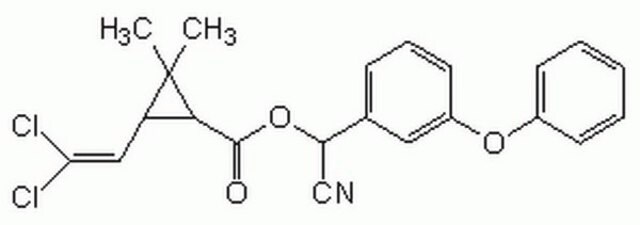Key Documents
306568
Potassium hydroxide
semiconductor grade, pellets, 99.99% trace metals basis (Purity excludes sodium content.)
Synonim(y):
Caustic potash
About This Item
Polecane produkty
klasa czystości
semiconductor grade
Poziom jakości
ciśnienie pary
1 mmHg ( 719 °C)
Próba
99.99% trace metals basis (Purity excludes sodium content.)
Postać
pellets
skład
KOH, >85.0%
zanieczyszczenia
15% water
pH
~13.5 (25 °C, 5.6 g/L)
mp
361 °C (lit.)
ślady kationów
Na: ≤500.0 ppm
ciąg SMILES
[OH-].[K+]
InChI
1S/K.H2O/h;1H2/q+1;/p-1
Klucz InChI
KWYUFKZDYYNOTN-UHFFFAOYSA-M
Szukasz podobnych produktów? Odwiedź Przewodnik dotyczący porównywania produktów
Powiązane kategorie
Opis ogólny
Zastosowanie
- As a base in the synthesis of imines, starting from amines and alcohols.
- As a base in β-alkylation of secondary alcohols with primary alcohols without any transition metal catalyst.
- In combination with aluminium for pinacolization of aromatic aldehydes and reduction of hindered ketones.
- As a precipitating agent in the synthesis of MnZn ferrites nanoparticles (Mn0.8Zn0.2Fe2O4 ferrite nanoparticles) by modified hydrothermal method.
Hasło ostrzegawcze
Danger
Zwroty wskazujące rodzaj zagrożenia
Zwroty wskazujące środki ostrożności
Klasyfikacja zagrożeń
Acute Tox. 4 Oral - Eye Dam. 1 - Met. Corr. 1 - Skin Corr. 1A
Kod klasy składowania
8A - Combustible corrosive hazardous materials
Klasa zagrożenia wodnego (WGK)
WGK 1
Temperatura zapłonu (°F)
Not applicable
Temperatura zapłonu (°C)
Not applicable
Certyfikaty analizy (CoA)
Poszukaj Certyfikaty analizy (CoA), wpisując numer partii/serii produktów. Numery serii i partii można znaleźć na etykiecie produktu po słowach „seria” lub „partia”.
Masz już ten produkt?
Dokumenty związane z niedawno zakupionymi produktami zostały zamieszczone w Bibliotece dokumentów.
Klienci oglądali również te produkty
Nasz zespół naukowców ma doświadczenie we wszystkich obszarach badań, w tym w naukach przyrodniczych, materiałoznawstwie, syntezie chemicznej, chromatografii, analityce i wielu innych dziedzinach.
Skontaktuj się z zespołem ds. pomocy technicznej




